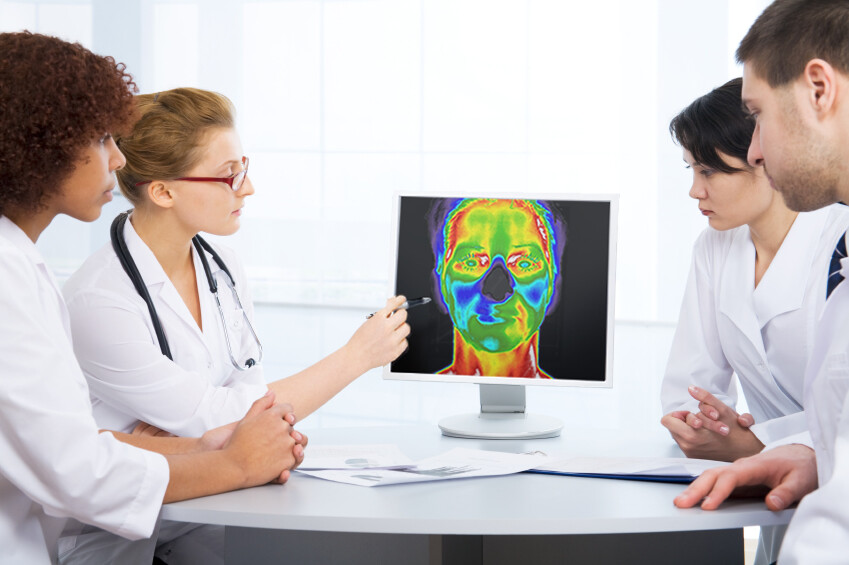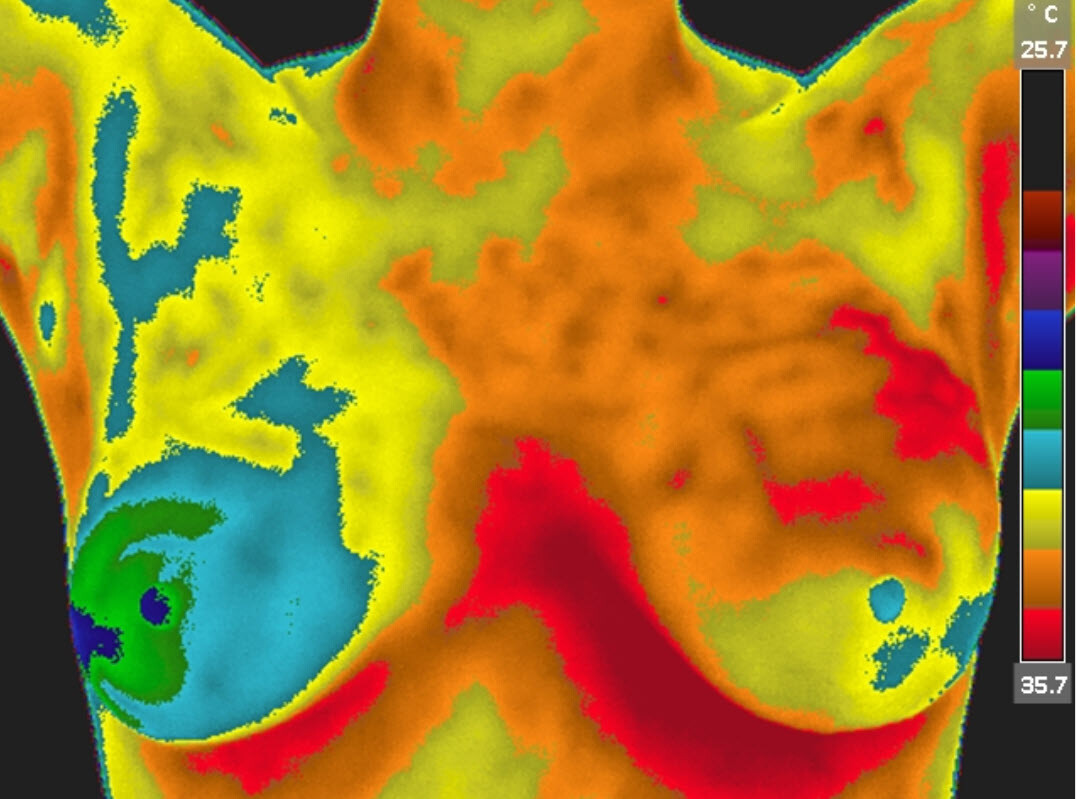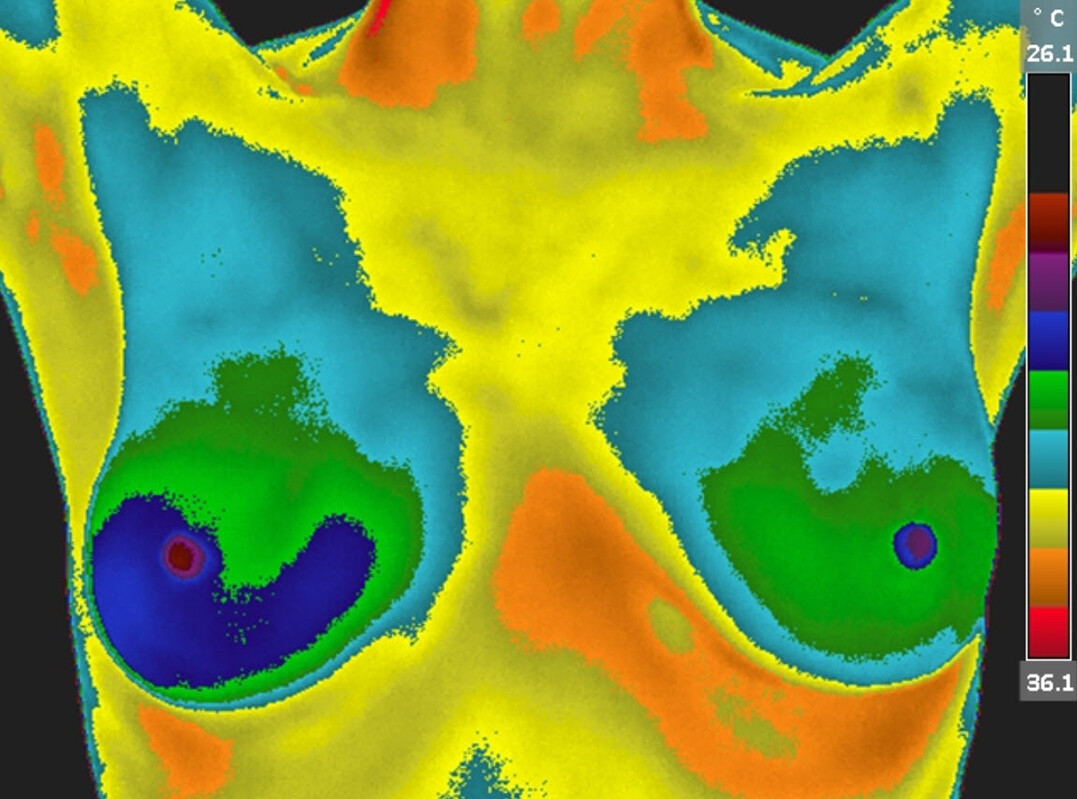
IR & The Clinic
Medical Thermology
Clinical or medical thermography is the examination of the human body with an infrared camera. These cameras have multiple uses over a wide variety of industries and military applications. Certain models are applicable to human imaging. These models have specifications that include detectors with a narrow range of temperatures and lenses for distances that allow a comfortable and practical distance from camera to the target person.
In the United States there is no official “governing body” to enforce guidelines, so practitioners must learn from a reputable source how to be technically and imaging technique responsible in the clinical environment.
However, the United States Food and Drug Administration currently accept applications (510(K)) for thermographic cameras as Class I Medical Devices. These are described as devices that hold no potential risk and have the lowest level of regulatory control. As examples, bandages, stethoscopes and blood pressure monitors are Class I Devices. These are health-care supportive devices that are not diagnostic and do not claim diagnosis on their own.
The greatest risk of non-compliance is termed “Branding and Labeling”, which includes any claims as to indications for use.

Understanding
Medical Thermography
Thermographic cameras can measure temperature variations on the skin, just like blood pressure monitors can measure blood pressure, but cannot independently make a diagnosis. When marketing to the public that is all that can be represented, otherwise the advertiser is not in FDA compliance and therefore puts themselves, the holder of the 510(k) and the entire industry at risk.
That being said, the healthcare provider can decide how to use the information for a specific patient, but a general claim is outside the Class I Regulation. Representing thermography as a “Discovery Tool” is a concept most people can relate to and it is within the “Branding and Labeling” guidelines.
Opinion: The United States FDA could accept applications for thermography cameras as Class II devices, which would require clinical trials and would therefore, be very expensive and time consuming with no guarantee of approval. However, if accepted, this would create a responsibility in regard to diagnosis and regulatory control, which would also create liability that does not exist with a Class I device. In my opinion, there are major benefits to thermography, as used today, to remain a Class I medical device. All users and providers must stay in compliance to remain viable and protect our Class I status.
Thermography
and Cancer
The thermography thermal sensor does not “see” cancer or inflammation or any state of disease, it senses voltage, converted to temperature, converted to a sensed thermal image.
Those who believe they are discrediting the technology by saying that “Thermography cannot detect cancer” do not understand that is not the reason to use thermography. The device has no opinion or judgement, it just conveys genuine information.
The challenge is purely human. Our challenge is to understand the thermodynamics of the body and how that possibly relates to various physiological conditions. The thermal image is our reference. This assessment is partly science and partly the art of practicing preventive medicine.
The thermal device may not be able to “see” but the computer makes it possible for us to measure and observe with our eyes, the indisputable signs of inflammation, the most consequential of all human conditions and the acknowledged root of all chronic disease. Thermography cannot see cancer, but it can sense inflammation or unusual blood profusion.
The “detection of cancer” presumes an assumption that cancer is already manifested. The detection of inflammation presumes an assumption that there is an atypical anomaly, creating blood profusion in a specific region or location, which deserves attention. I ask you, which is of the most value to the assessment of an individual’s physiological health? Who would it benefit the most?
For me, the ultimate answer to the question “What is Thermography?” is this: a sensory tool that combined with knowledge of thermal physiology can be a radically indispensable benefit to the support of the health of the entire human population.
Clinical Thermography
Business
Our helpful video discusses the most important considerations when investing for your Clinical Thermography Business.







